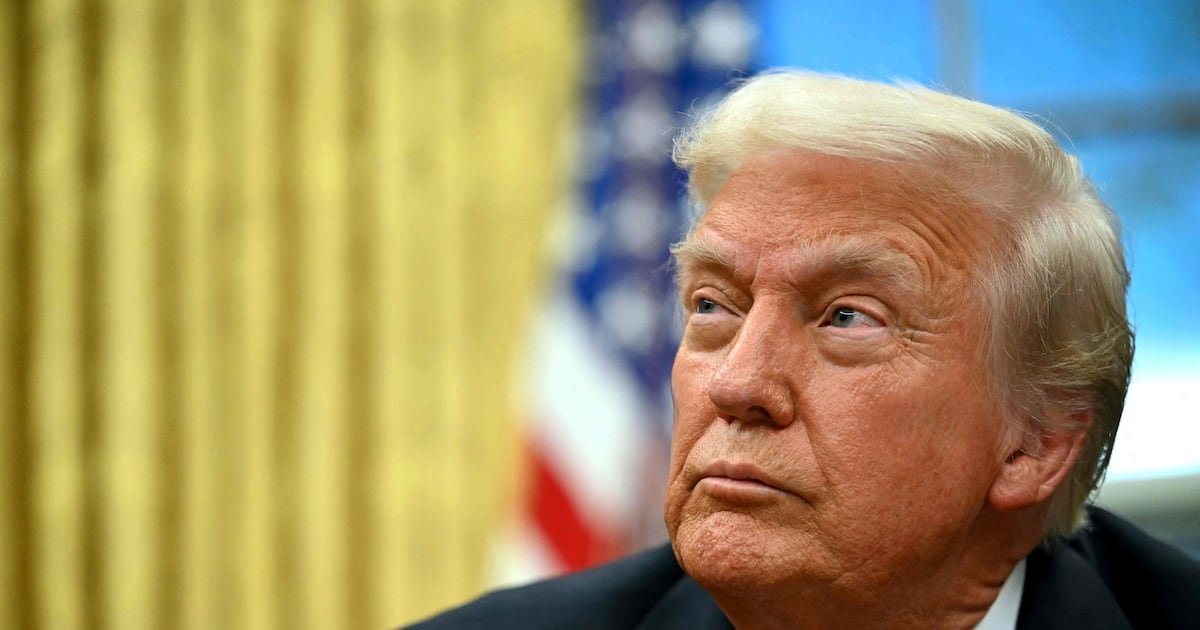President Donald Trump on Thursday signed an executive order imposing “reciprocal tariffs” on trading partners, with the move aimed at reducing the trade deficit, raising revenue for the US and tackling what he claims are unfair practices.
Mr Trump signed the directive, which he said would strengthen the US economy, in the Oval Office, where he also threatened a 100 per cent tariff on Brics countries if they decide to replace the US dollar as their reserve currency.
“If they want to play games with the dollar, then they’re going to be hit with a 100 per cent tariff the day they mentioned that,” he told journalists. “And they will come back and say, we beg you, we beg you not to do this, Brics is dead.”
Brics originally consisted of Brazil, Russia, India, China and South Africa, but it has expanded to include the UAE, Egypt, Ethiopia, Indonesia and Iran. The group does not have a common currency, but long-running discussions on the subject have gained some momentum after the West imposed sanctions on Russia over the war in Ukraine.
A senior US administration official said the tariffs would be customised based on each trading nation’s profile with respect to “tariffs” imposed on the US, including the VAT rate.
“First, America runs its more than a trillion-dollar pernicious trade deficit because the major exporting nations of the world attack our markets with punishing tariffs and even more punishing non-tariff barriers,” the official told journalists.
A key target, the official said, is the EU and its VAT, which is essentially a sales tax on goods and services regardless of country of origin. US consumers in most states pay sales taxes too, but these are less than the 20 per cent typically seen in Europe.
Mr Trump has suggested that he might target Europe’s car and food sectors, calling the bloc an “atrocity” on trade. The bloc’s trade surplus with the US grew to €15.3 billion ($15.9 billion) in August this year, from €13 billion in the same period in 2023, according to official data.
The White House official said a 27 per cent tariff would be imposed on cars coming from EU countries. The official did not say when those would take effect.
In a fact sheet, the White House laid out several examples of unreciprocated tariffs, including a 10 per cent rate from the EU on cars, compared to a 2.5 per cent one from the US.
“This lack of reciprocity is one source of America’s large and persistent annual trade deficit in goods: closed markets abroad reduce US exports and open markets at home result in significant imports, both of which undercut American competitiveness,” according to the document.
In December, Mr Trump demanded the bloc reduce its growing deficit with the US by making large oil and gas purchases.
“President Trump has rightly singled out the EU hidden VAT, which more than doubles the EU’s tariff on American autos, even as it acts as a massive export subsidy,” the official said. “President Trump’s fair and reciprocal plan will put a swift end to such exploitation of American workers.”
The move came hours before Mr Trump was scheduled to meet Indian Prime Minister Narendra Modi at the White House. Mr Trump has described India as a “very big abuser” of trade ties with the US and is hoping to reduce the nearly $46 billion trade deficit with the country.
Mr Trump, who took office on January 20, campaigned on promises to impose heavy tariffs, even on some of the country’s closest trade partners, as part of his America First agenda.
So far, he has announced 25 per cent tariffs on goods from Mexico and Canada, but those were postponed in exchange for commitments on border security and crime enforcement from both countries. He has, however, threatened to expand tariffs on steel and aluminium from both countries.
Mr Trump has also imposed 10 per cent duties on goods imported from China.
